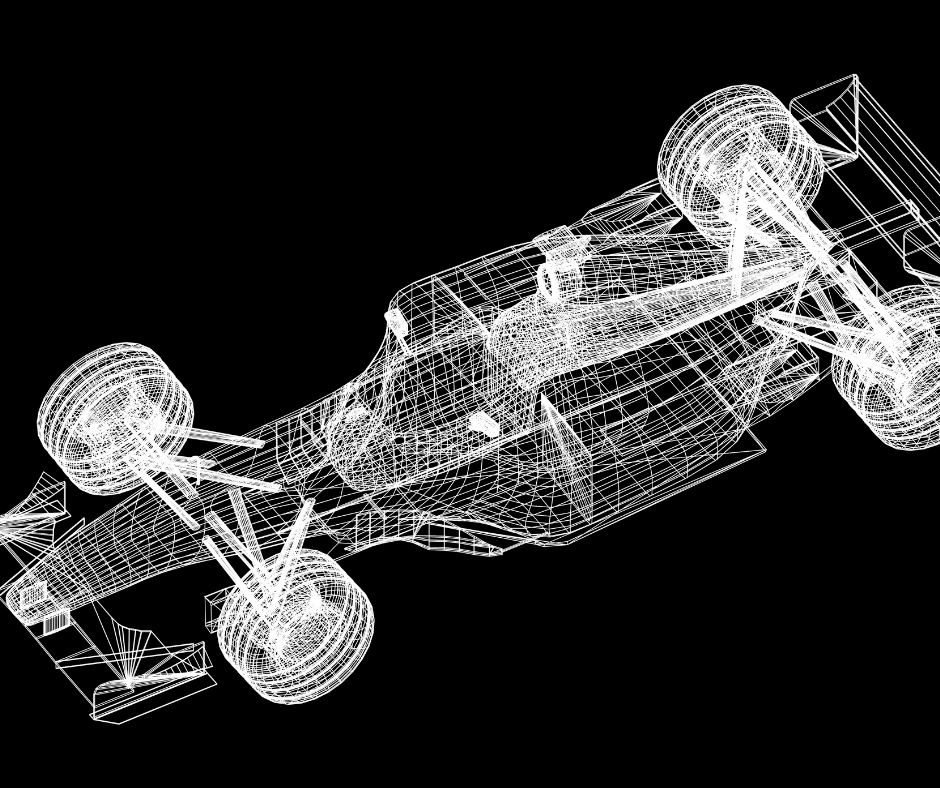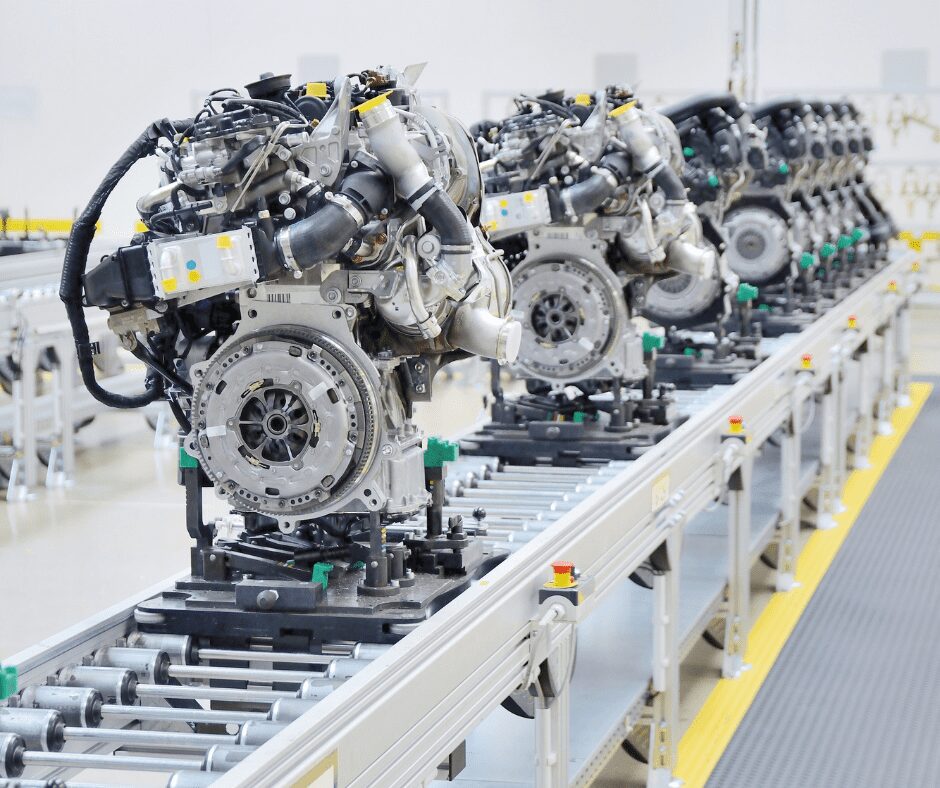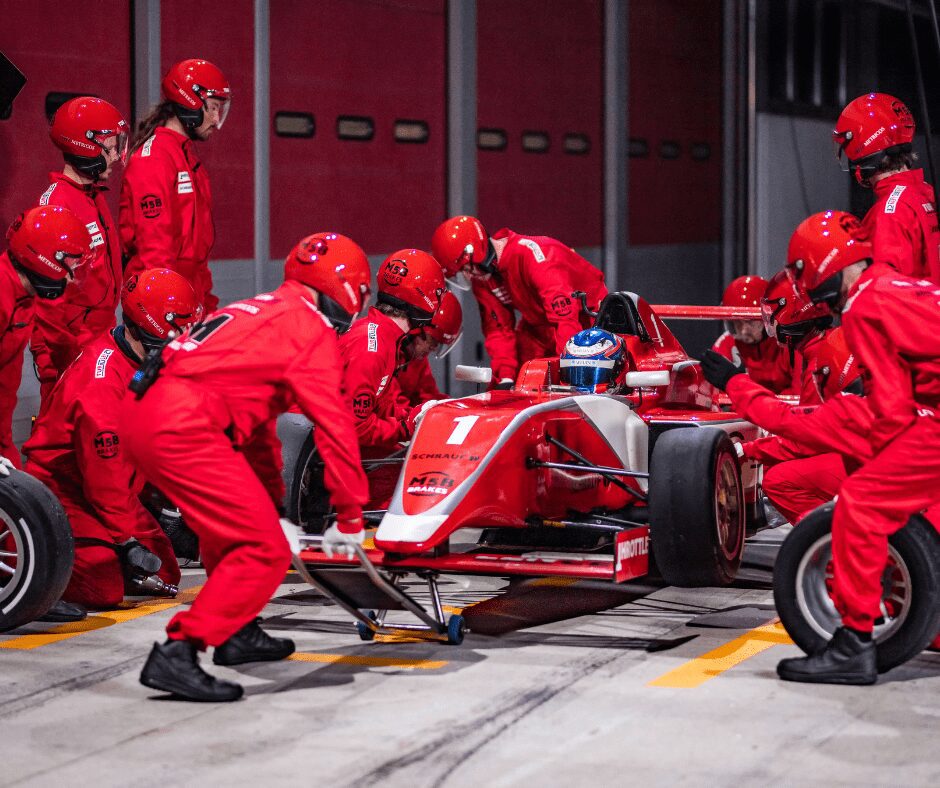In this article, you will discover how composite materials are used in F1 cars and learn about the specific materials used. With our expertise in motorsport composites, we understand the importance of cutting-edge components that drive success on the track.
So, let’s take it up a gear and look at how composite materials are used in Formula 1.
Table of Contents
What Are Composites Used For in F1?
Composites are used in many components of an F1 car, including the chassis, engine covers, brake ducts, bodywork, wings, diffusers and suspension systems. Composites used include carbon fibre, which provides exceptional strength-to-weight ratios, durability and flexibility in design and enhances performance, safety and weight reduction.

The Evolution of Composites in Formula 1
The evolution of composites in Formula 1 began in the 1960s with the introduction of simple fibreglass parts. In 1962, Jim Hall and Hap Sharp designed the Chaparral 2, which sparked innovation with its fibreglass chassis. Over the decades, the industry then witnessed a revolutionary transition to carbon fibre and other composite materials. This was driven by the pursuit of reduced weight, increased strength and superior aerodynamic efficiency. It was in 1981 that the McLaren MP4/1 made its debut race as the first F1 car to use a full carbon composite body. In the modern day, composites are now integral to the construction and manufacturing process of Formula 1 vehicles.
The Importance of Composites in F1 Design
Composites play a pivotal role in Formula 1 design, offering unmatched benefits in terms of strength, weight reduction, and design flexibility. These materials enable engineers to push the boundaries of motorsport design, optimising aerodynamics and creating vehicles that are faster and more fuel-efficient with better handling and improved performance.

Enhancing Performance through Material Innovation
Advanced composites have led to the development of lighter, stiffer, and more aerodynamic components. Innovations in materials include new fibres and resin systems, as well as spread tow fabrics/reinforcements. Spread tow reinforcements were first introduced in 2004 and allow weight savings of 20-30% when compared to traditional composites. In the current climate, manufacturers are focusing on developing natural fibre composites. For example, McLaren developed a racing seat made from flax, which reduced the carbon footprint by 75% and improved safety whilst matching the performance of conventional carbon fibre.
Safety Improvements with Advanced Composites
Advanced composites have also brought significant safety improvements to Formula 1 vehicles. Composites increase the structural integrity of a car and have high energy absorption qualities, which can dissipate the force of impacts. These qualities provide superior crash protection and enhance safety.

Types of Composite Materials Used in F1 Cars
Composite materials used in F1 cars include carbon fibre, aramid (Kevlar), Zylon, polyethylene filaments and epoxy resins. These materials are used in the chassis, bodywork, and aerodynamic components, providing rigidity and energy absorption in crashes.
Carbon Fibre – The Backbone of F1 Engineering
Carbon fibre is a lightweight, strong material made from thin strands of carbon atoms bonded together in a crystal structure. It’s known for its high stiffness, high tensile strength, low weight, high chemical resistance, high-temperature tolerance, and low thermal expansion. These properties make carbon fibre an ideal material for manufacturing F1 components where light weight and superior performance are needed. Carbon fibre’s application ranges from the chassis to smaller components, such as body panels, wings, steering wheels, and suspension elements.
Other Composite Materials in F1 Construction
Amarid (Kevlar)
Aramids such as Kevlar are strong, heat-resistant synthetic fibres used in F1 cars for their excellent impact resistance and durability. They are primarily used in the construction of driver suits, helmets, and cockpit protection components to offer superior protection against high-speed impacts and fire.
Zylon
Zylon is a high-strength synthetic fibre known for its high tensile strength and thermal stability. It’s used to enhance safety, particularly in the construction of the cockpit survival cell, helmet visors, and tethers that prevent wheels from detaching in a crash. It improves the structural integrity of the car and protects the driver by absorbing and dispersing impact energy more effectively.
Polyethylene Filaments
Often known as ‘Dyneema’ or ‘Spectra’, these filaments exhibit high abrasion and chemical resistance, plus low moisture absorption. They are woven with carbon fibres to make components that require durability and impact resistance and can often be found in the construction of helmets, suits and seatbelts. However, it should be noted that they are not suitable for high-temperature environments.
Epoxy Resins
Epoxy resins are a type of polymer used for their strong adhesive properties, durability, and resistance to high temperatures and chemicals. They are crucial in bonding carbon fibre components and enhancing the structural integrity of the chassis, bodywork, and aerodynamic parts. Epoxy resins’ ability to cure into a rigid yet lightweight form makes them ideal for creating composite materials for F1 vehicles.
Manufacturing and Testing of F1 Composites
The manufacturing and testing of F1 composites involve cutting-edge techniques to create materials that are both lightweight and incredibly strong. Let’s take a look at the engineering and testing process below.

The Precision Engineering Process
The manufacturing of F1 composites involves a precise engineering process, where materials like carbon fibre are layered and shaped into components. Steps include part layup, vacuum bagging, autoclave curing and resin transfer moulding, followed by trim and assembly.
Rigorous Testing for Optimal Performance
Composites then undergo rigorous testing to ensure optimal performance under extreme conditions. This includes stress tests, impact simulations, and thermal analysis to evaluate the durability, resilience, and safety of the materials. These tests determine whether the components can withstand the high-speed impacts and pressures of Formula 1 racing.
How Composites Influence Race Day Strategies
Composites create vehicles that are faster and more fuel-efficient, this influences race strategies in terms of pit stops and tyre usage. The aerodynamic efficiency provided by composite materials also allows for better handling and speed through corners, which influences how teams approach race conditions.

The Future of Composites in Formula 1
The future of composites in Formula 1 is marked by continued innovation and the exploration of new materials that promise to revolutionise the sport. With advancements in material science, we can expect to see composites that are even lighter, stronger, and more heat resistant, further enhancing the performance and safety of F1 cars. Plus, the integration of sustainable materials is also expected to continue to evolve.

Emerging Technologies in Composite Materials
Manufacturers are now demonstrating their commitment to sustainability and are developing materials such as recycled carbon fibre (rCF). In October 2023, McLaren trialled the use of recycled carbon fibre on their cars in the USA Grand Prix. Most recently, they have stated that they are aiming to develop a ‘fully circular’ car by 2030 in their sustainability strategy.
Other emerging technologies include:
- Innovations in high-performance resins and adhesives
- Ultra-fast curing epoxy composites
- Using nanocomposites to improve material properties at a molecular level
- Using smart metal composites to add new functionalities
- Early defect detection in carbon fibre composites
Predicting the Next Big Breakthrough in F1 Composites
The next big breakthrough may include the development of advanced materials like graphene-infused carbon fibre, offering unprecedented strength and lightweight properties, or breakthroughs in recyclable composites, aligning with the sport’s sustainability goals. Also, smart composites with integrated sensors could provide real-time data on car health and aerodynamics, revolutionising vehicle monitoring and performance.
Conclusion
Around 80% of an F1 vehicle’s volume is made from composite materials, highlighting the key role that composite materials play in Formula 1 racing cars. Types of composite materials used include carbon fibre, aramid (Kevlar), Zylon, polyethylene filaments and epoxy resins, and it is likely that future innovations will focus on sustainable materials.
Here at Piran Composites, we design and manufacture cutting-edge composite parts for the motorsport industry. We provide comprehensive production services and craft components such as patterns, moulds, aerodynamic bodywork, brake ducts and engine covers. If you would like to know more, simply get in touch with one of our expert team.


